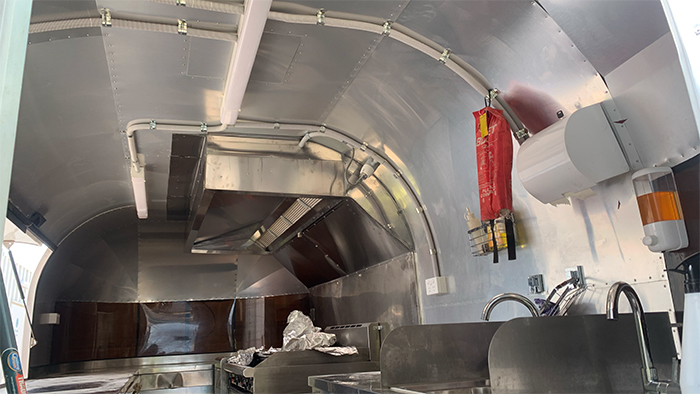
Exhaust canopies for food trucks are essential to maintaining a safe and efficient kitchen in the mobile food service industry. Food trucks have become a vital part of the Australian food scene, offering delicious meals on-the-go. However, managing kitchen ventilation in such confined spaces presents unique challenges. Exhaust canopies play a crucial role in ensuring clean air, improving safety, and meeting health and safety regulations. In this post, we’ll explore how exhaust canopies are tailored for food trucks and why they’re indispensable for mobile kitchens.
Food trucks face specific challenges when it comes to kitchen ventilation. Unlike fixed kitchens, food trucks are confined spaces where heat, smoke, grease, and odours can quickly build up. A high-quality exhaust canopy ensures that these elements are effectively removed from the air, improving air quality, reducing fire hazards, and providing a comfortable environment for staff.
In a food truck, space is limited, so it’s crucial to have a compact yet efficient exhaust canopy. Stainless steel exhaust canopies are designed to fit seamlessly into mobile kitchens, providing high-performance ventilation without occupying valuable space. They help eliminate heat, smoke, and grease, ensuring a clean and safe cooking environment.
Australia’s local health and safety regulations require food trucks to adhere to specific guidelines for kitchen ventilation. A commercial exhaust canopy ensures your food truck meets these requirements. It helps prevent the buildup of hazardous fumes, reduces the risk of fire, and ensures that your mobile kitchen complies with safety standards, keeping you and your customers safe.
Modern exhaust canopies for food trucks are designed to be energy-efficient, consuming less power while still providing excellent airflow. This is important for food truck owners who want to reduce running costs while maintaining a safe working environment. Energy-efficient canopies help extend the lifespan of your food truck’s ventilation system, saving you money in the long run.
Space is always at a premium in food trucks. The exhaust canopies used in these environments must be compact yet highly effective. Custom stainless steel exhaust canopies are available, tailored to fit the unique dimensions of your truck. Whether you operate a small food trailer or a larger mobile kitchen, there’s a custom canopy solution that will meet your needs.
A commercial-grade exhaust canopy not only helps with ventilation but also reduces health risks. Food trucks often prepare grease-heavy meals that release oil vapours into the air. Without proper extraction, these particles can lead to health issues and even contribute to fires. A high-quality exhaust canopy captures and removes grease and smoke, keeping your staff and customers safe from airborne toxins and reducing fire hazards.
Improved Air Quality: Keep the air inside the food truck clean and fresh, creating a more comfortable environment for staff.
Enhanced Safety: Proper ventilation reduces the risk of fire by removing excess heat and grease.
Increased Efficiency: Custom exhaust systems are designed to maximise airflow in limited spaces, improving the overall efficiency of your food truck kitchen.
Long-Term Savings: Energy-efficient canopies reduce power consumption, helping food truck owners save on operational costs.
When selecting an exhaust canopy for your food truck, consider the size of your kitchen, the type of food you’re preparing, and your specific ventilation needs. At NXT GEN Canopies, we provide custom-designed stainless steel exhaust canopies that are compact, efficient, and tailored to fit the unique requirements of mobile kitchens. Our canopies are built to comply with Australian safety standards, ensuring your food truck operates smoothly, safely, and efficiently.
If you’re looking for a high-quality exhaust canopy for your food truck, NXT GEN Canopies has the expertise to provide the perfect solution. We offer custom-made exhaust canopies that will help your mobile kitchen run efficiently, safely, and in compliance with regulations.